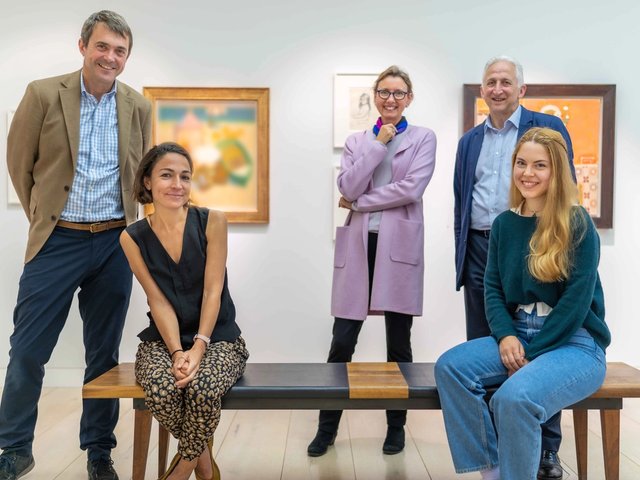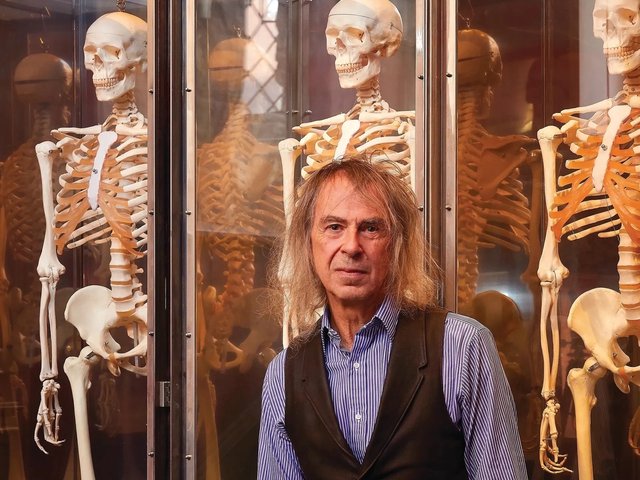An art dealer is calling on the UK government to reverse a policy he says will destroy a ground-breaking initiative to safeguard the legacy of Fred Yates and, potentially, other artists who have died without making a will.
John Martin, Yates’s representative in London since the early 1990s, has spent years devising an arrangement by which a museum in Cornwall would take charge of the artist’s estate—including hundreds of paintings—funding its work through Artist’s Resale Right revenues and protecting the Crown’s long-term interest in the art and its royalties.
However, the Government Legal Department (GLD), which has the final say because Yates died intestate and without heirs, has instead decided to dispose of the art by auction. Now Martin is pleading for it to reconsider.
Born in Manchester in 1922 and self-taught, Yates lived in France but died in 2008 on his way to buy a property in Somerset, where he intended to move. The ensuing legal dispute between France and the UK led to millions of pounds being lost in costs, Martin says. The estate included more than 400 paintings in France and 200 in the UK, a considerable number of properties and nearly £500,000 in the bank.
“However, as is often the case with artists, writers and composers, the greatest value lies in the royalties due on his estate, which in the case of Fred Yates has been estimated to be worth as much as £10m over the next 70 years,” Martin says.
The French authorities have already sold all Yates’s paintings and property in France, and disposed of his letters and personal effects in a local flea market. The French paintings were later sold without reserve and for a fraction of their value in a Paris auction, with most of the money raised taken in fees, commissions and taxes.
“The auction included some of Yates’s most important late paintings and realised barely a fifth of their value,” Martin says. “The decision to sell the work in Paris defied all logic; it was a mindless act of lawyers who hadn’t a clue about the value of what they had been entrusted with.”
Martin was determined to save the remaining paintings, money and estate still in his care in the UK, on which the French authorities believed they had a claim. Following advice from the art lawyer Pierre Valentin, he asked the GLD’s Mark Neale to claim the estate for the Crown. Neale reviewed the case and agreed that the Crown had a legitimate claim because Yates intended to return permanently to the UK.
Martin then negotiated his plan with a group of Cornish museums and the Art Fund. They submitted a detailed proposal to the government showing how the estate could generate royalties and merchandising of at least £3m to £4m under such a deal, funding the resources and expertise the museum needed to manage the collection on public display.
“It was a win/win proposal; an initiative that was keenly followed by the Art Fund and the Department for Culture, Media and Sport, and gained the support of the Truro MP, Sarah Newton,” Martin says. “If successful, it could have provided a blueprint for the long-term care of cultural assets, allowing cash-poor museums to create an important stream of income whilst offering significant public benefits.”
However, the GLD rejected the proposal, arguing that it was “not in the business of retaining assets for the purposes of hoping to increase capital value over time”, taking the decision to start selling the art instead. But Martin counters that a well-managed estate can “generate wider interest and recognition of the artist, which in turn brings increased value and increased royalties”.
So far, only a few works have been sold, so there is still time to persuade the GLD to think again. “The likely auction price for a single-artist disposal of this scale would be about £300,000—about a fifth of the value of the estate if the work was sold individually. But, worse, it would have a significant knock-on effect on the value of royalties from a flooded market,” Martin says. “Royalties are paid for 70 years after the artist’s death and will often constitute the most valuable part of an estate. The act of selling the paintings off at auction does not discharge the government’s responsibilities.”
A further complication arises because the GLD does not own the estate, so if an heir or a will turns up, it then hands over the estate to the beneficiary. If the GLD has disposed of the estate to the detriment of its value, it would seem not to be acting in the best interests of either the Crown or any heirs who might eventually emerge.
Neither the GLD nor the Art Fund responded to a request for comment by the time of publication.




